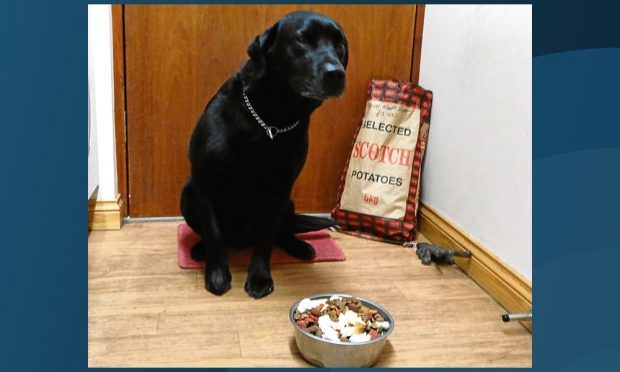There are seasons in the Doyenne’s year when her kitchen takes on the steamy atmosphere of the witches’ cave in Shakespeare’s play, Macbeth. Late summer and early autumn is the season for jams and jellies made from the wild rasps and brambles and other hedgerow glories that I pick for her. January is homemade marmalade season.
I am bracing myself for the Christmas season which will shortly overwhelm me. The mincemeat is made and there will be no escape from the clatter of the electric mixer, rolling out pastry, cutting mince pie cases and the welcoming, warm aroma of her mince pies filling the kitchen.
It’s not just mince pies. The other evening she was looking through her recipe book, which is just a shambles of recipes scribbled out in hurried handwriting, with others written on torn sheets of notepaper. She was hunting for her friend Marjorie’s gingerbread recipe. “I’ve had it for ages”, she muttered. “It’s on a piece of dog-eared paper.”
In the doghouse
That set me thinking, why dog-eared? It’s clearly a disparaging description. Inka’s ears are black and silky, as were his grandfather’s, Inka One. His predecessor, Gibby, had a classic, noble head with ears not too big and not too small but just right.
The late, lamented Macbeth, our much-loved Westie, whose disgraceful life was spent scrambling through the dirtiest, smelliest undergrowth he could find, almost certainly was dog-eared. After one of his regular grooming sessions, I described him as going in deep shagpile and, when all the foliage had been cut back, coming out cut moquette. The Doyenne was probably more realistic when she described him as a demented ball of string.
Compared with cats and other domestic pets, dogs don’t get an altogether sympathetic press when it comes to comparative metaphors.
Gone to the dogs, they say; dog-in-the-manger, to describe the selfish actions of a spiteful person; dog-eat-dog – another nasty situation where someone will do anything to succeed regardless of the effect on other people.
Like a dog with a bone is more positive, describing a determined, single-minded person who won’t give up – dogged, you might say. Like a dog with two tails – happy. But why raining cats and dogs?
Dog collar, hair of the dog, my dogs are barking – I’m sure readers have their own favourites so I see no point in having a dog and barking myself.
Dog days are over
The snow-covered hills at the back of the house brought to mind a ballad from a dog-eared book of Songs and Ballads by Jeems, aka James Rae, described as poet, litterateur and composer, “full of delightful, pawky Scotch humour”.
The win’ blaws cauld frae east syne north,/The bens are tapp’d wi’ white;/The wee birds coorin’ on the sill/Tell us it’s winter quite…
I’ve been keeping our bird feeders filled. Regular visitors are our resident robin, lots of chaffinches and acrobatic blue tits and coal tits, hanging upside down on the fat balls, and a swarm of house sparrows. A male woodpecker calls most days. Both male and female greater spotted woodpeckers have a scarlet patch of feathers on their rump but only the male has a scarlet crown and nape. I’m surprised that only the one bird comes to the peanuts, as I know from their taradiddle drumming on old, resonant trees in springtime that there are several pairs in the near vicinity.
Goldfinches are our prize visitors. I’ve counted 19 of the colourful birds around our niger seed feeder. A charm of goldfinches is their collective noun and there surely can’t be a more fitting description.
Survival
The snow means the birds must work harder to get sufficient food to maintain body heat, especially through the night. And the change in weather has highlighted other feeding habits.
Out walking with Inka, I’ve come across haloes of slatey-blue feathers among the beech leaves, where a woodpigeon has been a sparrowhawk’s victim. A pigeon’s feathers fall out easily and with the impact of the hawk’s stoop and in the ensuing struggle, the victim’s feathers are scattered all around. The hunter would almost definitely have been the larger female bird as the smaller male is just not big enough to despatch so large a prey.
At the foot of an old beech tree I found a recently killed pigeon’s carcase. Its head was bitten off, which made me think it was the victim of a fox, which raised a conundrum. I wouldn’t expect a fox to stalk and kill as wary a bird as a pigeon in open ground so the answer may lie elsewhere.
Inka has been picking up dead pigeons which aren’t sparrowhawk victims and show no sign of being shot, nor are they so thin and wasted that they might have died of starvation. I’m wondering if they could have been eating adulterated grain.
But, great news. The Doyenne found her gingerbread recipe – another crisis averted. She was right, it is dog-eared.


